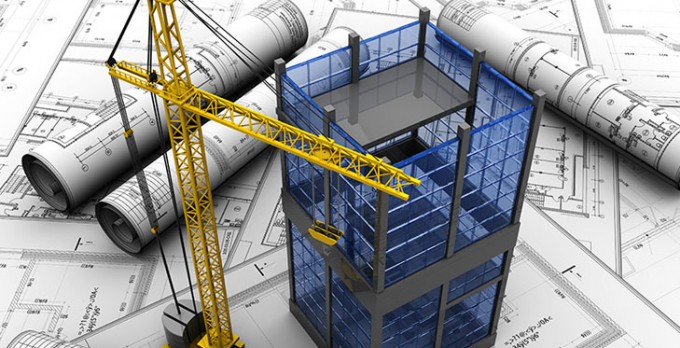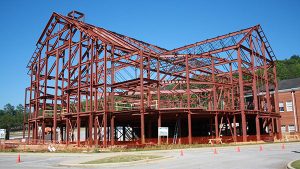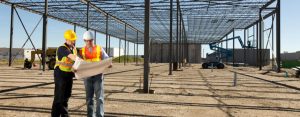Structural Engineering
Structural engineering — a specialty within the field of civil engineering — focuses on the framework of structures, and on designing those structures to withstand the stresses and pressures of their environment and remain safe, stable and secure throughout their use. In other words, structural engineers make sure that buildings don’t fall down and bridges don’t collapse.
 Our experienced structural engineers and staff combine experience with engineering technology tools to enhance the creative process, promote effective collaboration and improve coordination. Structural services are critical to the success of your building project. We can also provide periodic site observations documented with a written report and complemented with photos and action items.
Our experienced structural engineers and staff combine experience with engineering technology tools to enhance the creative process, promote effective collaboration and improve coordination. Structural services are critical to the success of your building project. We can also provide periodic site observations documented with a written report and complemented with photos and action items.
Services:
- Structural Engineering for Architects and Owners
- 3rd Party Structural Peer Reviews
- Design Build Engineering for Contractors and Owners
Specialty:
 Structural Steel Design
Structural Steel Design- Cast-in-Place and Precast Concrete Design
- Tilt-wall Concrete Design
- Post-Tension Concrete Design
- Wood Framing Design
- Structural Masonry Design
- Drilled Piers and Concrete Footings Design
- Elevated Structural Foundation Design
Building Types:
- Churches
- Hotels
- Banks
- Industrial Facilities
- Municipal Buildings & Jails
- Commercial Buildings
- Office Buildings
- Garages
- Schools & Gymnasiums
- Highway Signs
- Shopping Centers
- Hospitals & Medical Facilities
- Warehouses
- Apartment Buildings & Multi-family Residential
If you need to discuss your project with a structural engineer, call us at (469) 294-8860.
A structural engineer works alongside civil engineers, architects, contractors and owners. They design solutions for projects of all types, sizes and levels of complexity. They analyze and design the supports and force resistance of buildings, bridges, and other structures.
ANALYZES AND DESIGNS…
 The basic tasks of structural engineering relate the amount of physical forces to the physical configurations of force-resisting elements or structures. Analysis is determining the forces in each element in a structure (such as a beam) when the configuration of elements is already defined. Design is the process of configuring elements to resist forces whose values are already known. Analysis and Design are complementary procedures when designing structures. After doing a preliminary design, the designer estimates the final configuration of elements of a structure. The analysis then determines the forces in those elements. After the element forces are known, the elements can be designed (their configuration can be chosen) more precisely. The process iterates between analysis and design until the best design is achieved.
The basic tasks of structural engineering relate the amount of physical forces to the physical configurations of force-resisting elements or structures. Analysis is determining the forces in each element in a structure (such as a beam) when the configuration of elements is already defined. Design is the process of configuring elements to resist forces whose values are already known. Analysis and Design are complementary procedures when designing structures. After doing a preliminary design, the designer estimates the final configuration of elements of a structure. The analysis then determines the forces in those elements. After the element forces are known, the elements can be designed (their configuration can be chosen) more precisely. The process iterates between analysis and design until the best design is achieved.
…GRAVITY SUPPORT AND LATERAL FORCE RESISTANCE
Structures are subject to vertical, or “gravity” loads and horizontal, or “lateral” loads. Gravity loads include dead loads and live loads. Dead loads (or permanent loads) are the structures weight, including walls, floors, finishes, and mechanical systems. Live, or temporary loads, are the weight of the contents and occupants, including the weight of snow. Lateral loads include those generated by the wind, earthquakes, or explosions. Structural elements must be designed so that, as a system, the structure can resist all loads that will act upon it.
…BUILDINGS, BRIDGES, AND OTHER STRUCTURES
Structures are any system that resists vertical or horizontal loads. Structures include large items such as skyscrapers, bridges, and dams, as well as small items such as bookshelves, chairs, and windows. Designing small structures involves testing, or trial and error. Designing larger structures requires a structural engineer using mathematical calculations. Structural engineers design and analyze buildings, bridges, power plants, electrical towers, dams, and other large structures that are essential to life as we know it.
WHY YOU NEED A STRUCTURAL ENGINEER
STRUCTURAL ENGINEERS PROVIDE:
- Expertise regarding the structural analysis and design of structures.
- Determination of lateral forces, such as wind and seismic, on structures.
- Selection of framing systems and recommendations for construction and economic feasibility.
- Assessments of existing building vulnerabilities.
- Coordination and preparation of plans, calculations, specifications and reports.
- Knowledge of common construction materials such as steel, concrete, wood and masonry.
- Project Inspection services to monitor progress and ensure the project is being constructed according to the design specifications.
WHEN A LICENSED PROFESSIONAL ENGINEER IS REQUIRED
Your city or county Building and Safety Department, Department of Public Works, Planning Department, or municipal utility will be able to advise you about code requirements and what permits, plans, and maps are required, if any. These agencies can also inform you specifically when a licensed professional engineer is required.
 All civil, mechanical, and electrical engineering final plans, specifications, and reports must:
All civil, mechanical, and electrical engineering final plans, specifications, and reports must:
- be prepared by a registered engineer or by a subordinate under his or her direction;
- contain the engineer’s signature and seal or stamp;
- if multiple pages or sheets have been prepared, the signature and seal/stamp need only appear on the original plans and on the original title sheets.
Before you attempt to design or alter structures, prepare surveys, or hire an unregistered person to prepare your project, you may want to consider the following:
- Unregistered or unlicensed persons are allowed to perform engineering or land surveying services for you only if they are working under the responsible charge and direct supervision of a registered professional engineer or licensed professional land surveyor.
- Responsible charge relates to the span or degree of control a professional engineer or professional land surveyor is required to maintain and to the decisions which can be made only by a professional engineer or professional land surveyor.
- Contact your local city or county building officials and/or county surveyor’s office. Local officials will be familiar with factors of public health, safety, and welfare, as well as the local environmental conditions in various areas of the state, such as snow loads, high winds, earthquake activity, or tidal action.
